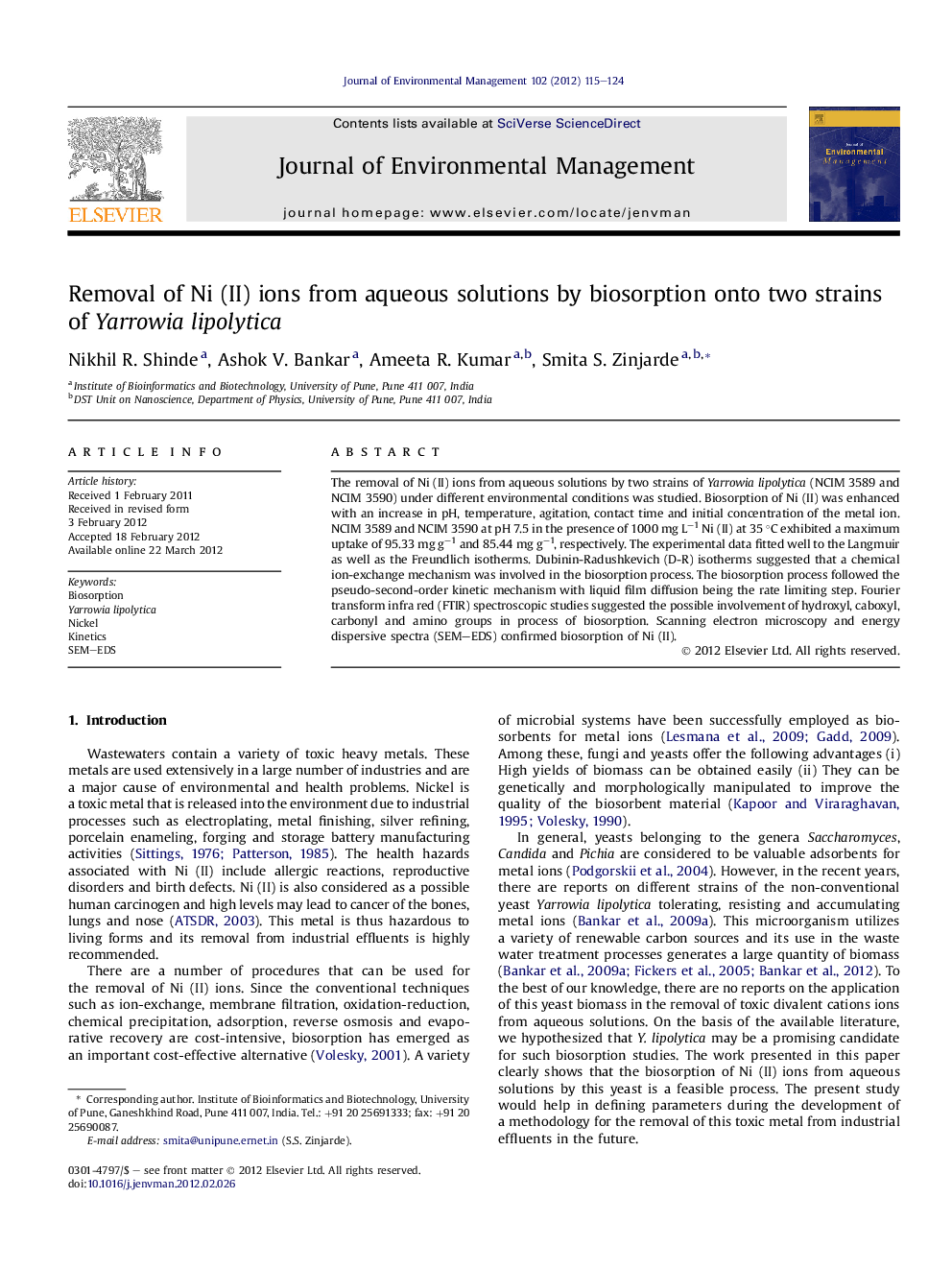| Article ID | Journal | Published Year | Pages | File Type |
|---|---|---|---|---|
| 1056819 | Journal of Environmental Management | 2012 | 10 Pages |
AbstarctThe removal of Ni (II) ions from aqueous solutions by two strains of Yarrowia lipolytica (NCIM 3589 and NCIM 3590) under different environmental conditions was studied. Biosorption of Ni (II) was enhanced with an increase in pH, temperature, agitation, contact time and initial concentration of the metal ion. NCIM 3589 and NCIM 3590 at pH 7.5 in the presence of 1000 mg L−1 Ni (II) at 35 °C exhibited a maximum uptake of 95.33 mg g−1 and 85.44 mg g−1, respectively. The experimental data fitted well to the Langmuir as well as the Freundlich isotherms. Dubinin-Radushkevich (D-R) isotherms suggested that a chemical ion-exchange mechanism was involved in the biosorption process. The biosorption process followed the pseudo-second-order kinetic mechanism with liquid film diffusion being the rate limiting step. Fourier transform infra red (FTIR) spectroscopic studies suggested the possible involvement of hydroxyl, caboxyl, carbonyl and amino groups in process of biosorption. Scanning electron microscopy and energy dispersive spectra (SEM–EDS) confirmed biosorption of Ni (II).
► Two strains of Yarrowia lipolytica were effective in biosorption of Ni (II) ions. ► Conditions and kinetic parameters for biosorption were studied. ► FTIR analysis suggested the role of different groups in the biosorption process. ► Scanning electron microscopy and energy dispersive spectra confirmed biosorption.
